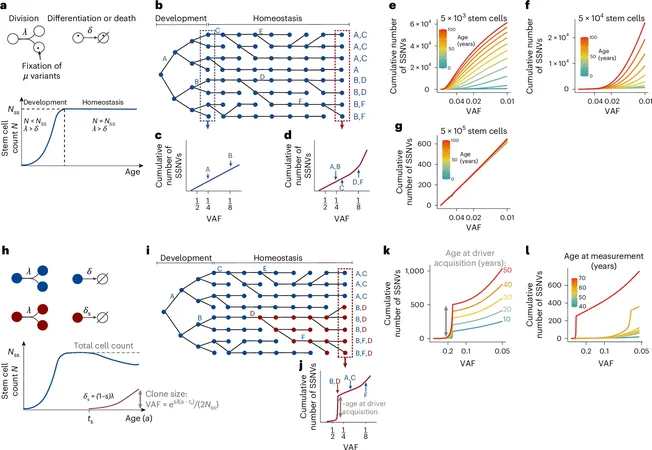
Revolutionary Tool Slash Detection Time for Life-Threatening Pulmonary Hypertension!
2025-06-05
Author: Arjun
A Game-Changer in Heart Health
A groundbreaking new automated tool developed by a team of physicians at the prestigious Lewis Katz School of Medicine at Temple University has the potential to transform the detection of pulmonary arterial hypertension (PAH), a dangerous form of heart failure tied to high blood pressure in the lungs. This revolutionary tool, named VEST, could dramatically improve patient outcomes by allowing for earlier diagnoses and referrals.
Accuracy Redefined in PAH Detection
Dr. Anjali Vaidya, lead author of the study and co-director of the Advanced Pulmonary Hypertension Program at Temple University Hospital, praised the VEST tool's impressive accuracy in identifying individuals at risk for PAH. Integrated directly into electronic medical record (EMR) systems, VEST streamlines the process by automatically calculating PAH risk scores without the need for labor-intensive manual calculations.
Tackling Delays in Diagnosis
The remarkable efficiency of VEST could allow physicians to make quicker referrals to pulmonary hypertension specialty centers, potentially before the disease takes a severe toll on patients’ health. Past studies have shown that many patients received positive VEST scores—a strong indicator of elevated risk—over 200 days prior to being formally diagnosed with PAH, by which time their risk of mortality had surged.
Robust Validation and Results
Analyzing data from 4,952 patients, the study compared VEST scores derived from an automated algorithm with those calculated manually by clinical experts, revealing a perfect 100% correlation in a sample of 60 cases. Among those flagged with the highest risk score of +3, it was alarming to learn that a staggering one-third had never been referred to a pulmonary hypertension specialist, underscoring a troubling gap in care.
Breaking Down Barriers to Care
While existing diagnostic methods often rely on invasive procedures that come with risks, the VEST tool standardizes risk detection, easing the diagnostic burden on non-specialist providers. Current research indicates the average time from symptom onset to a diagnostic right heart catheterization is an astounding 2.8 years, highlighting the critical need for innovative solutions to expedite diagnosis.
Hope for Widespread Implementation
Building upon prior research that validated the VEST scoring model, the team is optimistic about the broader application of this tool. Although limitations exist due to incomplete data in some patients, VEST has already seen implementation at Temple University, with plans to extend its reach nationwide and globally.
A Bright Future for Heart Health
The researchers envision that integrating the automated VEST score into echocardiography reports will facilitate the identification of PAH patients across diverse clinical environments, even those lacking specific expertise in pulmonary hypertension. Their ultimate hope? To ensure that no patient falls through the cracks in the fight against this deadly condition.





 Brasil (PT)
Brasil (PT)
 Canada (EN)
Canada (EN)
 Chile (ES)
Chile (ES)
 Česko (CS)
Česko (CS)
 대한민국 (KO)
대한민국 (KO)
 España (ES)
España (ES)
 France (FR)
France (FR)
 Hong Kong (EN)
Hong Kong (EN)
 Italia (IT)
Italia (IT)
 日本 (JA)
日本 (JA)
 Magyarország (HU)
Magyarország (HU)
 Norge (NO)
Norge (NO)
 Polska (PL)
Polska (PL)
 Schweiz (DE)
Schweiz (DE)
 Singapore (EN)
Singapore (EN)
 Sverige (SV)
Sverige (SV)
 Suomi (FI)
Suomi (FI)
 Türkiye (TR)
Türkiye (TR)
 الإمارات العربية المتحدة (AR)
الإمارات العربية المتحدة (AR)